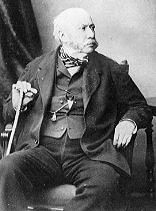Regency Personalities Series
In my attempts to provide us with the details of the Regency, today I continue with one of the many period notables.
Admiral Charles Phillip Yorke 4th Earl of Hardwicke
2 April 1799 – 17 September 1873

Charles Yorke
Charles Yorke 4th Earl of Hardwicke was born at Sydney Lodge, in Hamble le Rice, Hardwicke was the eldest son of Admiral Sir Joseph Sydney Yorke, second son of Charles Yorke, Lord Chancellor, by his second wife, Agneta Johnson. He was a nephew of Philip Yorke, 3rd Earl of Hardwicke. He was educated at Harrow and at the Royal Naval College, where he was awarded the second medal.
Hardwicke entered the Royal Navy in May 1815 as midshipman on HMS Prince, the flagship at Spithead. Later, he served in the Mediterranean, on HMS Sparrowhawk (18) and HMS Leviathan (74) then subsequently HMS Queen Charlotte (100), the flagship of Lord Exmouth, by whom he was entrusted with the command of a gunboat at the bombardment of Algiers. He later joined HMS Leander (60) under the flag of Sir David Milne, on the North American station, where he was given the command of the Jane, a small vessel carrying dispatches between Halifax and Bermuda. He was then appointed acting lieutenant of HMS Grasshopper (18) and after a few months commissioned in the rank of lieutenant in August 1819. The next October, he joined the frigate HMS Phaeton on the Halifax station, until appointed to the command of HMS Alacrity in 1823 on the Mediterranean station, in this post he was employed, before and after he obtained the rank of captain in 1825, in watching the movements of the Turko-Egyptian forces and in the suppression of piracy.
Between 1828 and 1831, he took command of HMS Alligator (28), on the same station and took an active part in the naval operation in connection with the struggle between Greece and Turkey. Lastly, between 1844 and 1845, for short periods, he assumed command of the steam yacht HMS Black Eagle and HMS St Vincent (120), in which he carried the Emperor of Russia, Nicholas I, to England. He attained flag rank in 1838. In 1849, while commanding HMS Vengeance, he participated in the repression of the republican rebellion of Genoa in support of the forces of the Kingdom of Sardinia. The Vengeance also fired on the Hospital of Pammatone, causing 107 civilian casualties. For these actions, he was decorated by the Sardinian King Victor Emmanuel II with two medals he was authorized to accept by Queen Victoria only in 1855. In 1858, he retired from the active list with the rank of rear-admiral, becoming vice-admiral in the same year, and admiral in 1863. He retired from the Royal Navy in 1870.
Hardwicke represented Reigate in the House of Commons between 1831 and 1832 and Cambridgeshire between 1832 and 1834. In 1834, on the death of his uncle, he became the fourth Earl of Hardwicke, and inherited the substantial Wimpole estate in Cambridgeshire. He was a member of Lord Derby’s cabinet in 1852 as Postmaster General and as Lord Privy Seal between 1858 and 1859. In 1852 he was sworn of the Privy Council.
Lord Hardwicke married the Honourable Susan Liddell, sixth daughter of Thomas Liddell, 1st Baron Ravensworth, in August 1833. They had five sons and three daughters. He died in September 1873, aged 74, and was succeeded in the earldom by his eldest son, Charles. The Countess of Hardwicke died in November 1886.
He also supposedly fathered an illegitimate child by one Charlotte Pratt, a serving girl at his Wimpole Hall home. Charlotte got married in 1849, and the following was noted in the marriage register:
The year before this marriage, 18-year-old servant girl Charlotte gave birth to a son, James Pratt, who was baptised on 2 April 1848. The father was understood to have been her employer, the 4th Earl of Hardwicke. “Charlotte… was a Pratt; and she was a picture. The handsomest woman that I ever remember to have seen. In harvest time to see her swinging along the road with a bundle of corn balanced on her head, both arms akimbo, was a study in colour, figure and poise”. – A.C.Yorke






























